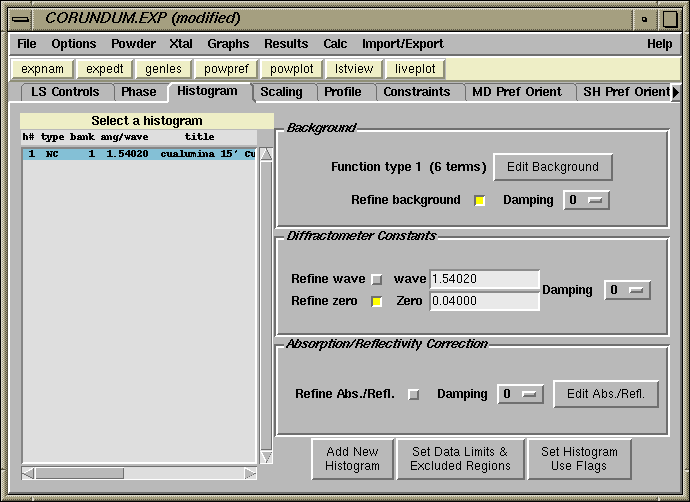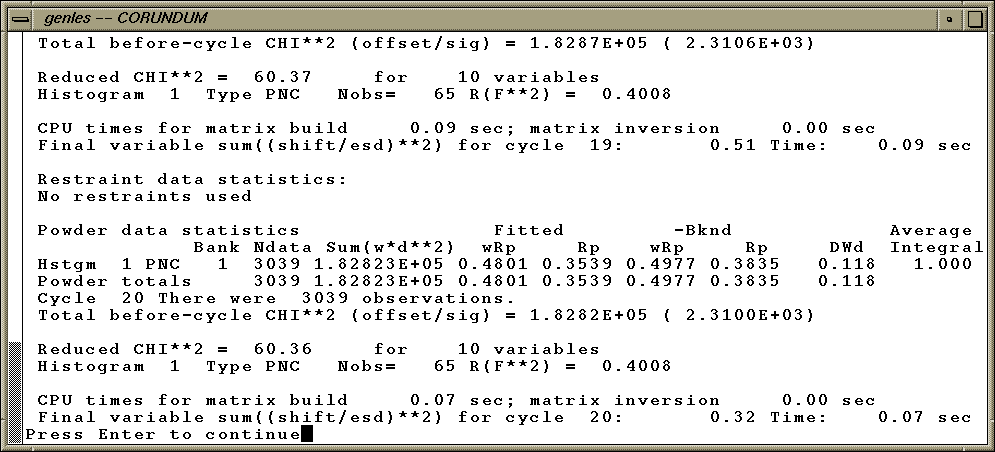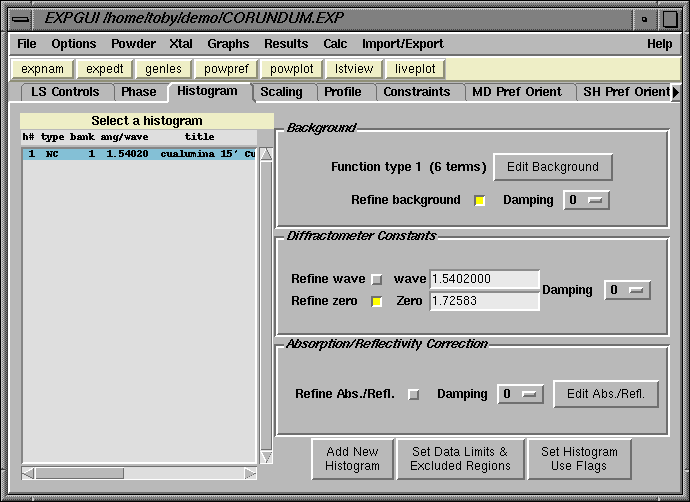
|

|
|
| Home | Instruments | Science | Experiments | SiteMap |
Intro Next page Previous page
GSAS/EXPGUI Alumina tutorial (part 8)
Fitting the Diffractometer Zero Correction
Now that the unit cell parameters have been fit, it is now a good idea to also refine the diffractometer zero correction.
The diffractometer zero correction refinement flag is found on the histogram panel, as seen below. Click on the check box for the zero correction near the middle of the window to refine the parameter.

Note that the diffractometer zero correction is refined for parallel beam instruments, such as neutron and synchrotron diffractometers. It should not be used for Bragg-Brentano instruments (laboratory flat-plate parafocussing instruments). For Bragg-Brentano instruments, instead the sample displacement parameter (shft) should be refined instead. When needed, for Bragg-Brentano instruments, the sample transparency correction (trns) may also be refined.When GENLES is run, as shown below, a small but significant improvement is seen in the agreement factors.

Note that the zero correction has refined from the starting value of 0.04 (0.0004 degrees two-theta) to 1.73 (0.0173 degrees two-theta). This small correction is needed to obtain a good fit and accurate lattice parameters.

Previous: Fitting the Unit Cell
Next step: Initial Fitting of Profile Parameters
Comments, corrections or questions: crystal@NIST.gov
Last modified 18-July-2003
$Revision: 1.1 $ $Date: 2002/07/18 20:45:10 $